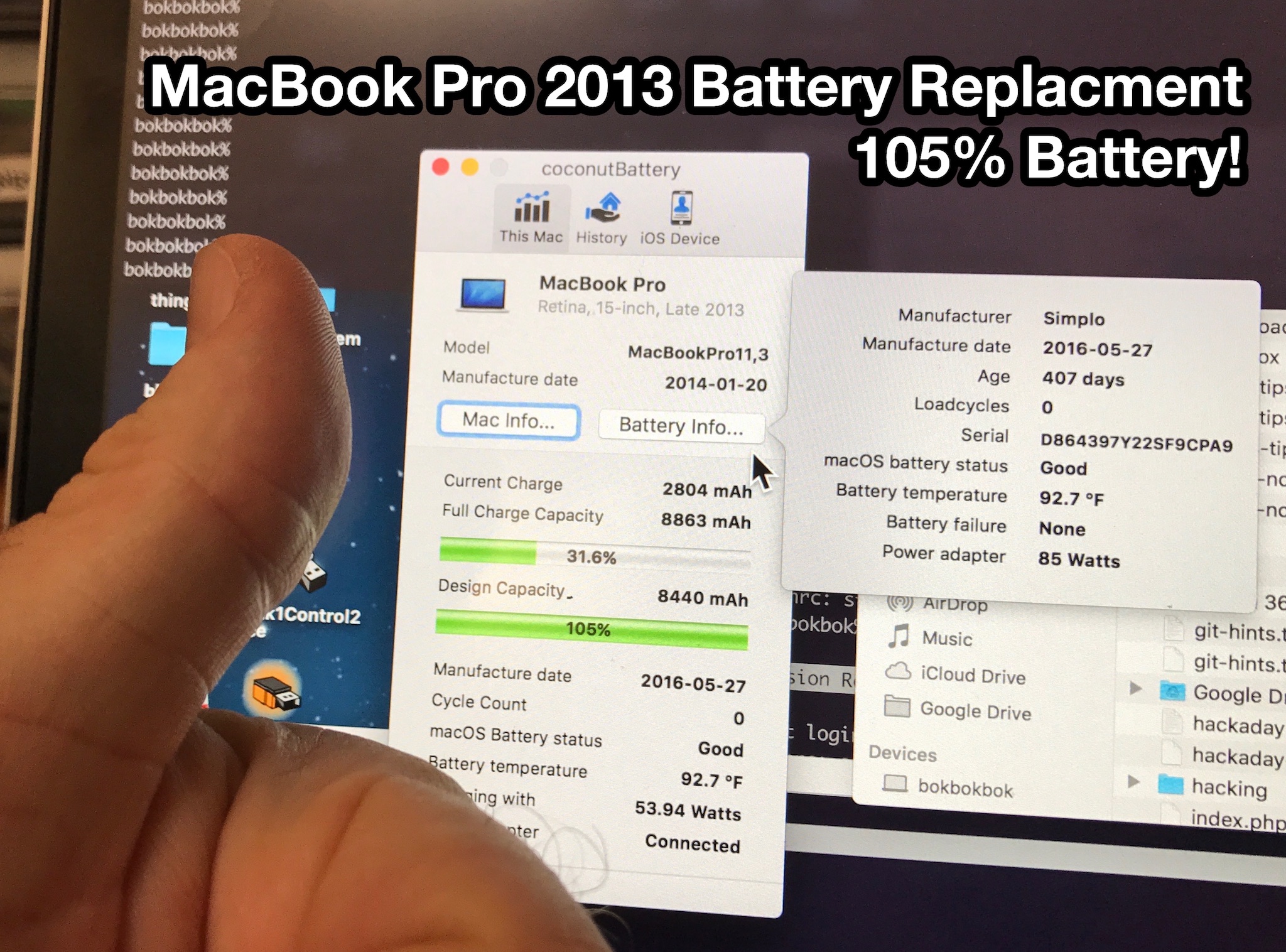

But, the life of their battery may usually vary based on the “real-world” tests conducted and administered for them. There are times when they are underestimated too. The estimated battery life for Apple’s 13-Inch and 15-Inch “Late 2013” and “Mid 2014” Retina Display MacBook Pro models are sound and reasonable.

But, it should still be reasonable to conduct third-party tests to validate.
#Macbook pro late 2013 battery 720p#
The “Mid 2014” versions utilized preproduction versions of batteries though in the MacBook Pro “Core i7” 2.5 15” (DG), “Core i7” 2.2 15” (IG), and “Core i5” 2.8 13”.įurthermore, Apple disclosed in detail that the company conducted wireless testing to measure the battery life of their products through browsing 25 well-known websites that feature a display brightness that may be set to 12 clicks or 75% adjustments more specifically, the HD 720p content.įor the past couple of years, the official battery life of Apple has really improved. It was originally intended for the preproduction versions of t he MacBook Pro “Core i5” 2.6 13”, “Core i7” 2.3 15” (DG), and the “Core i7” 2.0 15” (IG).
#Macbook pro late 2013 battery movie#
This kind of estimation is the same for iTunes movie playback or even wireless web.Īpple has already explained the estimated battery life of its models in the fine print. This is an hour allowance as compared to the old generation. The 15-Inch lines, on the other hand, have up to eight hours of battery life. This is a two-hour extension from the previous generation available. Moreover, Apple also released an estimation for both versions saying that the 13-Inch models can stand up to nine hours with their battery life.

They can be useful in helping users decide what they should purchase.īased on a press release from Apple, the “Late 2013” 13-Inch MacBook Pro models such as the MacBook Pro “Core i5” 2.4 13”, “Core i7” 2.8 13” and “ Core i5” 2.6 13” including the 15-Inch MacBook Pro versions like the MacBook Pro “Core i7” 2.0 15” (IG), “Core i7” 2.6 15” (IG), “Core i7” 2.6 15” (DG), and “Core i7” 2.3 15” (IG) feature a longer battery life as compared to their other predecessors.Īs for the “Mid 2014” MacBook Pro lines like the MacBook Pro “Core i5″ 2.6 13”, “Core i5″ 2.8 13”, “Core i7″ 3.0 13”, “Core i7″ 2.2 15” (IG), “Core i7″ 2.5 15” (IG), “Core i7″ 2.8 15” (IG), “Core i7″ 2.5 15” (DG), and “Core i7″ 2.8 15” (DG) - these versions use the same batteries like that of the “Late 2013” breed. We updated this Q&A to ensure that the important changes are included. If you're using the old-style iFixit adhesive remover with separate bottle and syringe (no longer sold), click here for a slightly modified set of instructions.Before reading, please note that both of these “Late 2013” and “Mid 2014” MacBook Pro versions are no longer available. Note: The solvent used to dissolve the battery adhesive can damage certain plastics, such as the MacBook Pro's plastic speaker enclosures. If your battery is swollen, take extra precautions.

A charged lithium-ion battery can create a dangerous and uncontrollable fire if accidentally punctured. To minimize risk of damage, turn on your MacBook and allow the battery to fully discharge before starting this procedure. Do not smoke or work near an open flame during this procedure. Perform this procedure in a well-ventilated area. IFixit adhesive remover is highly flammable. Alternatively, you can use an iOpener to apply a modest amount of heat in order to soften the adhesive before prying out the battery. This is best done with the help of an iFixit battery replacement kit the liquid adhesive remover in your kit will dissolve the adhesive securing the battery, allowing you to remove it with ease. Use this guide to remove the glued-in battery from your MacBook Pro.


 0 kommentar(er)
0 kommentar(er)
